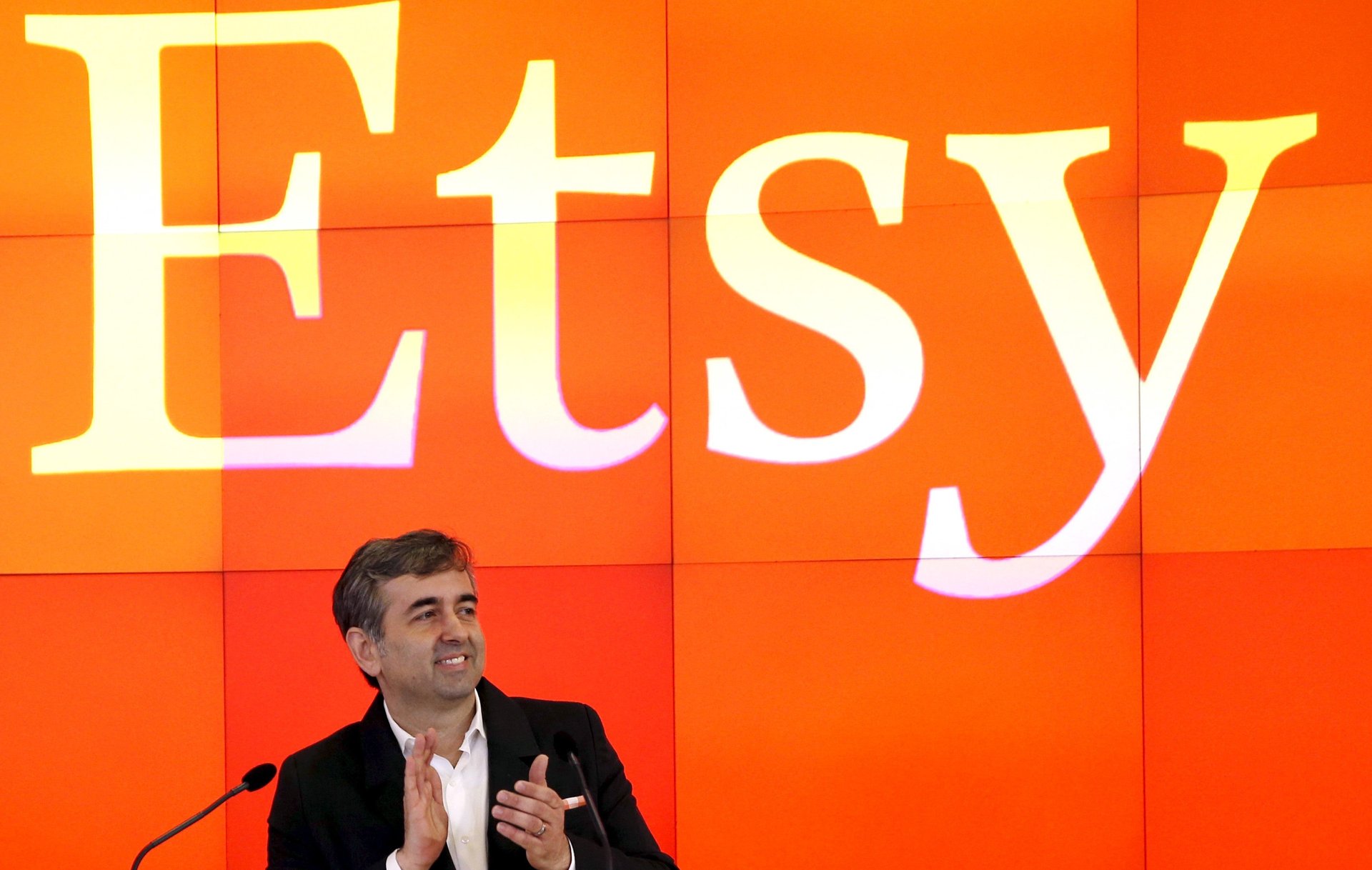Etsy had a rough first year as a public company. But it has a plan.
Only a year after debuting as a public company, Etsy needs to craft a comeback.


Only a year after debuting as a public company, Etsy needs to craft a comeback.
The share price of the online marketplace for handcrafted goods has been in a funk since its initial public offering last April, with shares down 77% to $8.32 from their high of $35.74. A number of worries drove the decline: Etsy’s slowing growth, uncertainty about its ability to expand overseas and competition from Amazon’s new Homemade store, among them.
But recently, some bright spots have emerged. Etsy’s fourth-quarter earnings report showed sales and guidance that were perkier than expected. The company also said revenue from seller service—the money it gets from charging its 1.6 million vendors to promote their listings, process payments and generate shipping labels—grew 54% year-over-year, and now makes up more than half its total revenue.
Looking to build on momentum with vendors, Etsy launched a new product this week. The service, called Pattern, offers Customizable websites for Etsy sellers. And while it’s not as fun as a personalized toothbrush holder or unicorn belly ring, it could add a new revenue stream for the company by charging sellers $15 a month. Expectations for revenue from Pattern are “modest” in the short term, but the idea is that the service will help Etsy maintain relationships with sellers who are critical to the company’s success, said Chad Dickerson, Etsy’s CEO since 2011.
“When our sellers do well, we do well,” he said in an interview at Etsy’s headquarters in Brooklyn’s Dumbo. “Part of our success is solving our sellers’ pain points.”
Customer satisfaction for both buyers and sellers is important to Etsy’s future growth, according to analyst Rohit Kulkarni of RBC Capital Markets, in a note to investors. More than half of Etsy buyers come through word-of-mouth and sellers choose the service because of its ease of use and low fees, he wrote. (Kulkarni has a neutral rating on the stock.)
The company hasn’t retrenched as investors abandoned Etsy last year, Dickerson said. It added more than 100 employees last year, growing to 819, and plans to do about the same this year. Compounded annually, revenue should grow between 20% and 25% over the next three years, the company said, and Wedbush Securities analysts estimate that Etsy should be consistently profitable by the end of this year.
But reaching the promised land of profits won’t solve all the company’s challenges. The company’s business model depends on the continued health of thousands of tiny businesses to produce and sell products, and buyers who have ever-increasing demands for convenience and value. And, of course, Amazon lurks as an existential threat.
Etsy’s attention to serving, and profiting from its sellers, seems like a reasonable long-term strategy, but only if investors gives the company time to pull it off. If the stock doesn’t rebound, it risks attracting activist investors or a hostile bidder, who may not be as friendly to the belly-ring makers of the world.